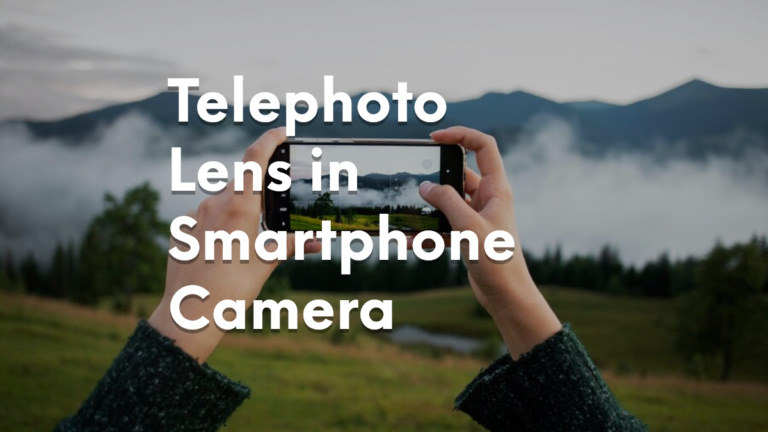You can use your smartphone as a security camera. Yes! You read that right. I’m assuming you didn’t know that (because neither did I). But the actual question is how you can do so?
Since ancient times, home security has been more important than ever. People used to go hunting, constantly thinking about what would be happening in my home. And it’s still the same case with modern beings too.
But we have plenty of measures to solve this like using smartphone cameras as security cameras.
With the prevalence of smart home devices and home surveillance systems, many homeowners are looking for affordable and convenient ways to monitor their property.
In this blog post, I’ll explain the benefits of using a smartphone for security and provide you with steps on how to easily turn your smartphone into a fully functioning security camera.
How to Use Your Smartphone as a Security Camera?
The great thing about using an old smartphone for security purposes is that you likely already have everything you need. Most smartphones made within the last 5-10 years have decent enough cameras and wifi connectivity built right in.
By leveraging a few free apps, you can convert that old phone into a 24/7 security camera in no time. Here are the basic steps:
1. Choose a location
Determine where you want to position your smartphone for the best view. Common areas include main entry doors, backyard/driveways, and rooms like living spaces or nurseries. Ensure the location has access to power and gets decent WiFi connectivity.
2. Download camera app
There are many free security camera apps, but a top choice is Alfred Camera. This flexible app allows you to control multiple old phones from a main smartphone. It supports motion detection alerts, cloud storage, and live remote access.
Alternatively, you can also use DroidCam. But it isn’t solely made to use as security cameras and doesn’t even support features like Alfred Camera. It’s mostly used as a webcam for livestream or work from home purposes.
3. Set up and adjust angle
Place the smartphone in the preferred spot and use a smartphone tripod mount or small shelf to angle the camera. You want a wide panning view that covers key areas. Test the camera feed by walking around the space to identify blind spots. Adjust placement as needed.
4. Connect to power
For continuous use, the smartphone will need consistent power. Connect the phone to a charger plugged into an outlet. There are long 15-20 ft chargers perfect for this use case. Make sure cords are tidy and out of main walkways.
5. Connect to WiFi
Ensure WiFi connectivity is strong in camera location. Connect the smartphone to primary home WiFi for remote accessibility from other devices. Disable cellular data/cellular connectivity if not using a SIM card to reduce battery drain.
6. Enable motion detection alerts
Through the app, turn on motion detection alerts. This will send a notification when movement occurs allowing you to see live footage and recordings. For privacy, keep alerts disabled on indoor/private spaces.
7. Check footage and features
Open a security app on your main phone to view live footage streams and access video history from smartphone cameras. Check that motion detection works properly. Explore app’s remote access, cloud storage, microphone talk back, and other offerings.
Position final placement and enjoy added security! With just a spare smartphone and security app, you now have a fully functional home surveillance system. Strategically place additional DIY smartphone cameras around property for complete coverage at very little cost.
Should you Use Your Smartphone as a Security Camera?
Using an old smartphone as a DIY security camera can be a very smart idea. The cameras and sensors built into modern smartphones are quite advanced and provide pretty decent video quality for basic surveillance needs. So yes, you should use your smartphone as a security camera.
Also, with smartphones now having large data storage, you can save recordings either locally or backup to cloud services.
Additionally, leveraging an app like Alfred Camera or DroidCam that allows for remote streaming, motion detection alerts, and multi-camera functionality makes a smartphone a fully featured security workhorse at a fraction of the cost of commercial systems.
Considering most people upgrade their phones every few years (check my ultimate smartphone buying guide), putting those older devices to work for security allows you to save money while repurposing tech that would otherwise go unused.
Just position them strategically around entry points or high value areas in your home. For minimal investment, using a spare smartphone as an extra set of eyes on your property is an easy way to enhance home security.
The flexibility, existing hardware, and affordability make them hard to beat for basic home surveillance and peace of mind.
Conclusion
To summarize, converting an old smartphone into a DIY security camera is an easy and very affordable way to enhance home protection and give homeowners better peace of mind.
The built-in cameras, connectivity, storage and sensors packed into today’s smartphones make them perfectly equipped for security needs.
With intuitive security apps like Alfred, you can take advantage of these device capabilities without advanced technical skills or large investments. Whether placed outdoors, at entryways or in high-value rooms, smartphone security cameras provide an extra set of eyes on your property.
So dig out that unused phone tucked away in a drawer and put it to work protecting your home!






